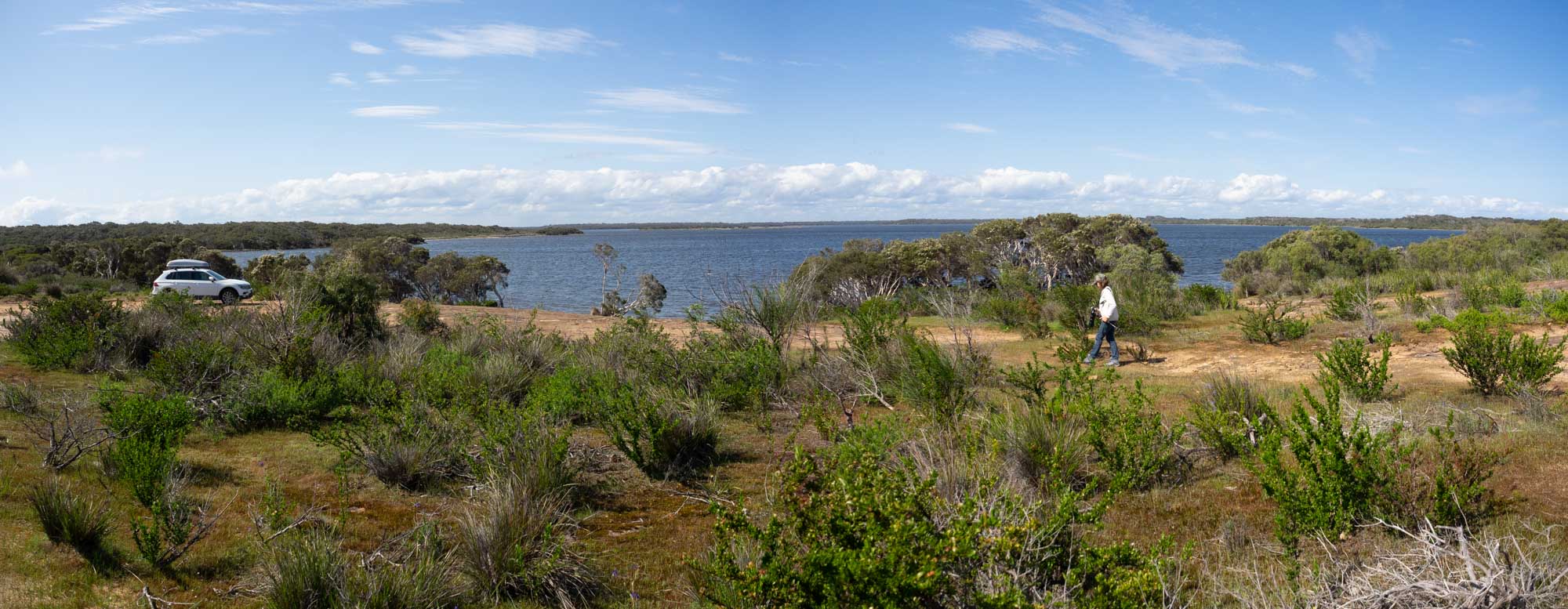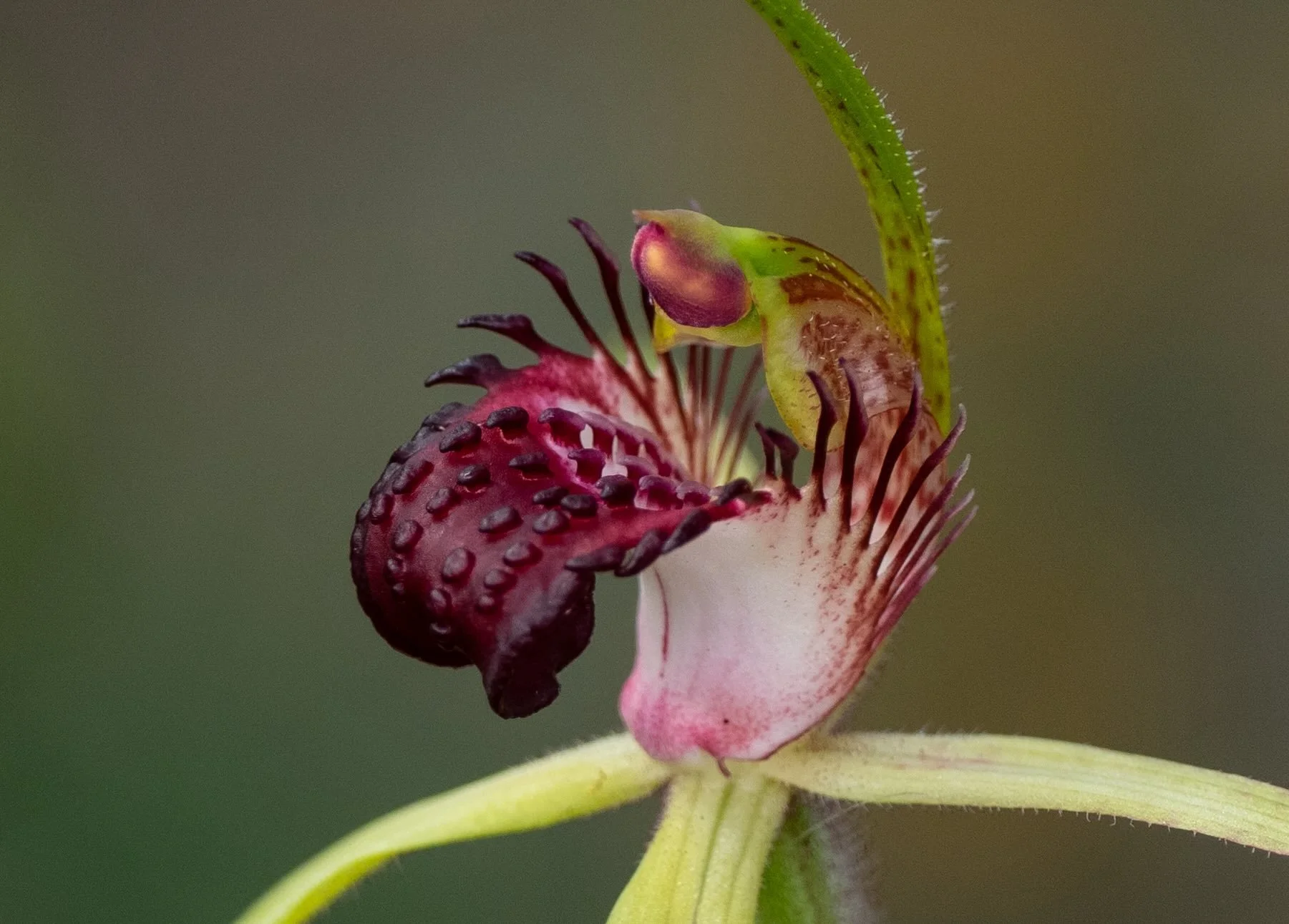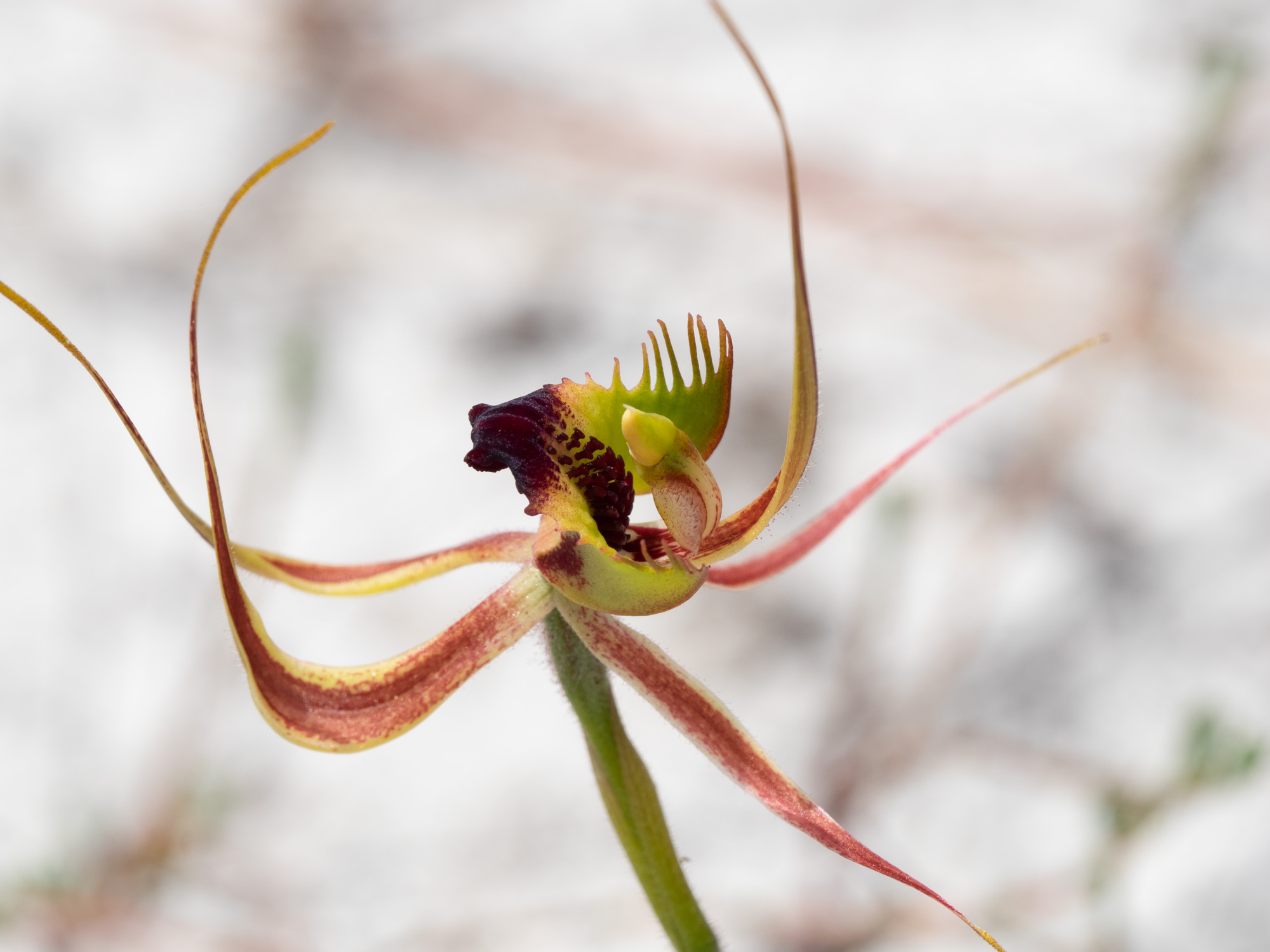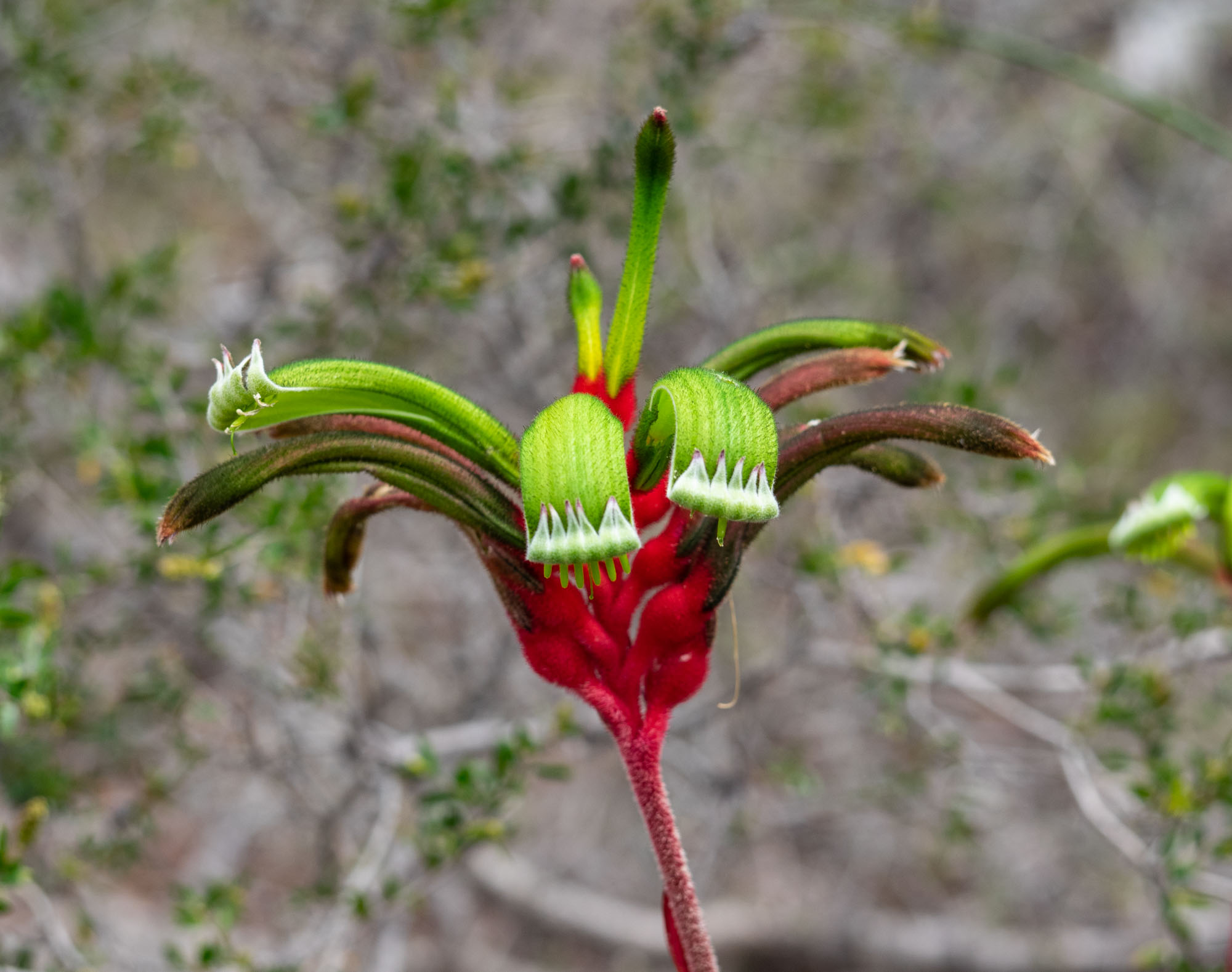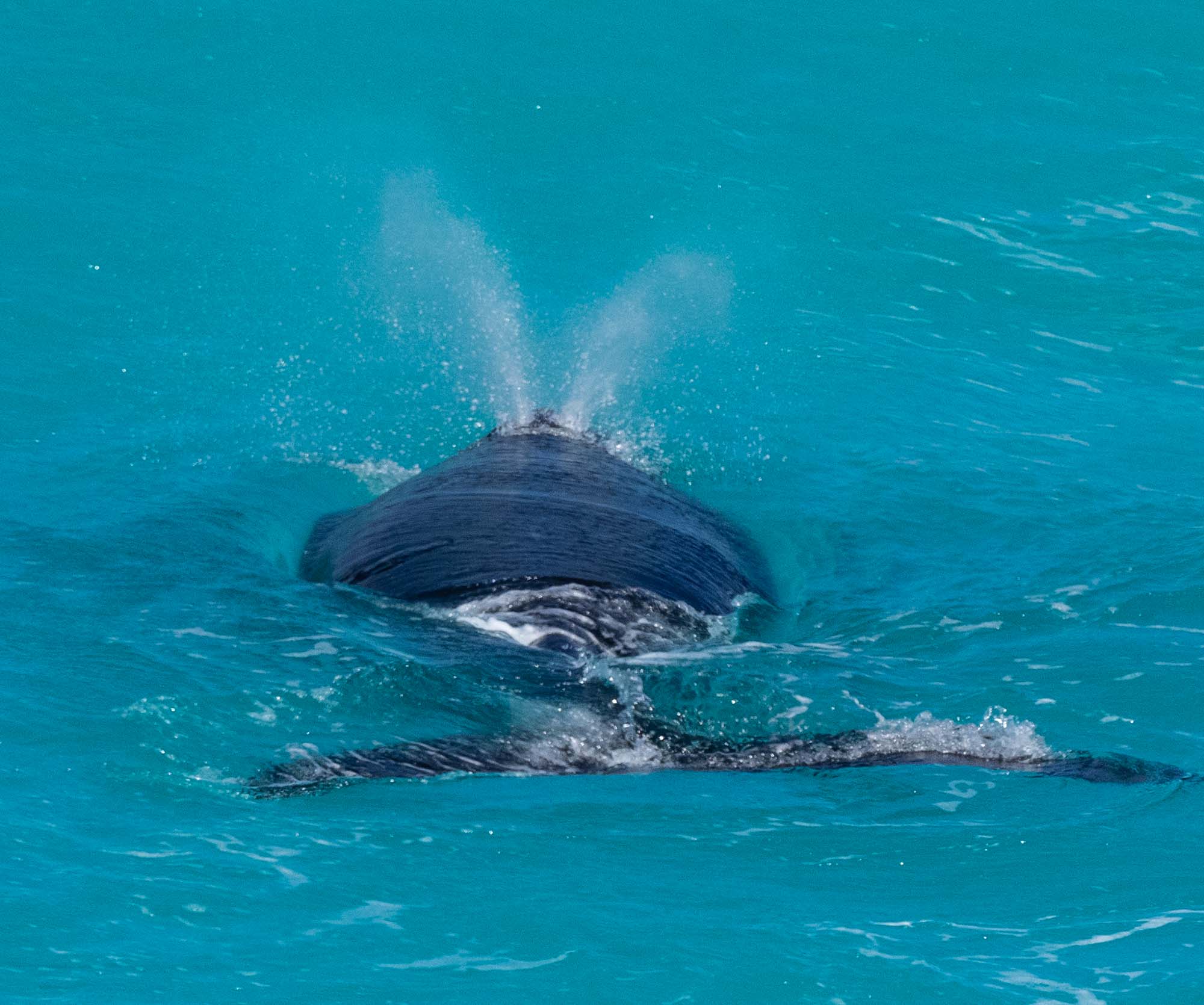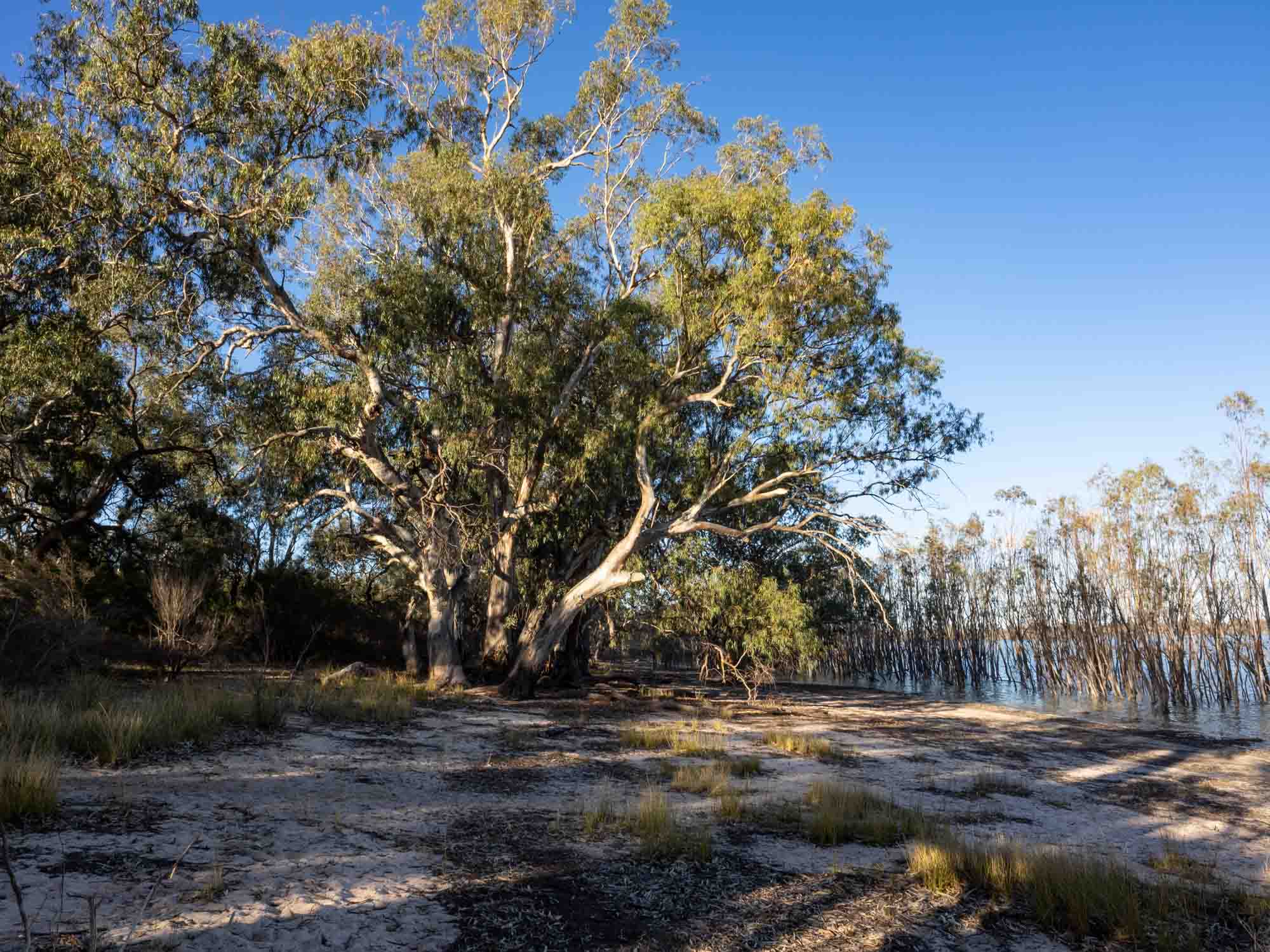an orchid obsession
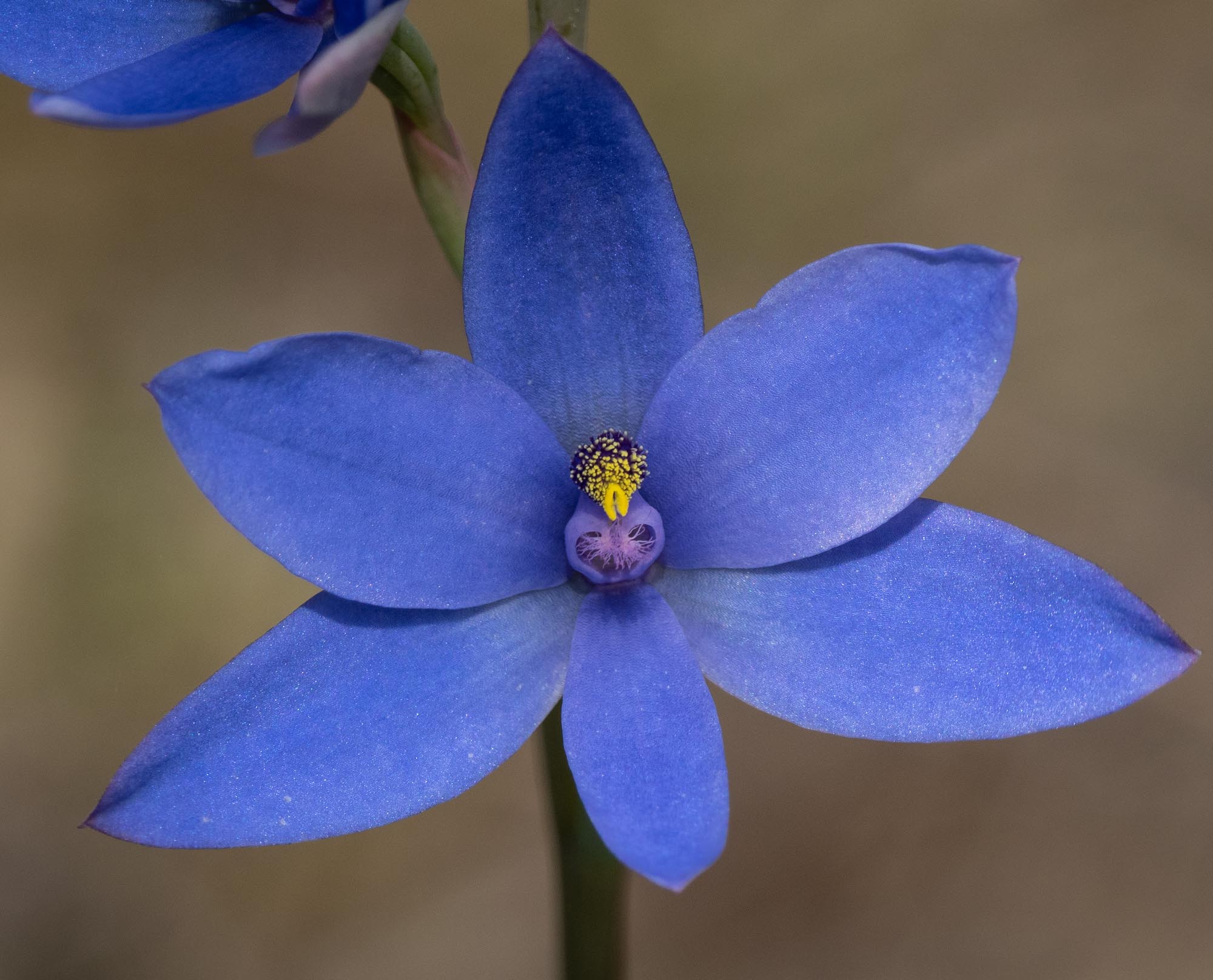
Week 5: around 7th October
(half-way through our trip)
We’ve shifted focus in the last week or so. Instead of stalking birds all day we now find ourselves hunting orchids for hours on end. We’re still keeping an eye out for birds, of course, but there are so many extraordinary orchids in bloom that we just can’t resist.
This new obsession really began in Walpole, where we found 15 species during a single hunt . That record will be difficult for us to beat, but we do seem to be finding novel species at every location we search.
Why are orchids such superstars?
I’ve been thinking about why we enjoy this so much. What is it about orchids that makes them so addictive? It’s more than just our usual fascination with plants. And it’s not just us. Many people share this particular obsession, as the popularity of orchid identification books and guided tours attest.
Perhaps it’s because they’re ephemeral
Flowers seem to appear out of nowhere, and usually don’t bloom for long.
Just after we found the Flying Duck Orchid in the photo above, Paul found several of these weird things. All identical, and so we thought … “another species!”. It was only after we’d spend time with the photos and the orchid books that we worked out that these were actually ‘dead ducks’. Well, not actually dead, just a little past their floral prime. And without heads!
Duck Orchid (Caleana sp.) … post pollination
Like many Sun Orchids, this tiny yellow orchid is rarely seen fully open. We had seen many closed flowers further south, at Walpole, and just one or two that were partly open. But near Augusta, on a sunny afternoon, I found two flowers on display.
Twisted Sun-Orchid (Thelymitra flexuosa)
Perhaps it’s their sheer beauty
Perhaps it’s their weirdness
Most plants have easily identifiable structures: two outer whorls (sepals and petals); an inner ring of pollen-carrying parts (stamens & anthers); and a central part that is the female structure. At first glance, some orchids don’t even look like flowers.
They are very sexy flowers
We’ve all seen nature documentaries about the special relationships that have evolved between orchids and insects. Many flowers rely on pseudocopulation for pollination.
For example, the ‘head’ of the hammer orchids (Drakaea spp.) mimic flightless, female flower wasps. They have a similar shape and they release the same pheromone.
Male flower wasps search for females and then usually carry them off in mating flights … something we were watching for real at Cheynes Beach.
Drakaea glyptodon labellum … apparently, to the male wasp, this looks (and smells) just like a female wasp of the same species
Mating flower wasps from an earlier post, at Cheynes Beach - not sure which species of wasp this is … yet!
But a male wasp fooled by the orchid can’t fly off. Instead he is flipped back against the flower, and acts as the pollinator. If I had the time I’d stake out these orchids in the hope of witnessing - and photographing! - such an encounter. Alas, not enough time … too many other sights to see!
(check out this short Wikipedia for a little more detail about Drakaea and their pollinators)
For us, it’s all of the above
Plus, as with bird watching, orchid hunting is largely an excuse to spend time exploring natural environments.
Orchid-hunting at a site near Augusta this week. This patch has fairly recently gained protection as a declared floral reserve, apparently in response to lobbying by locals and visitors. Well done to the folk involved!
Photography adds yet another dimension for us. The real complexity and beauty of the flowers is often only revealed once magnified. Most native orchids are really quite small.
It turns out that the perfect lens for orchid photography is a long focal length ‘bird’ lens - my 840mm-equivalent Olympus combination works a treat!
And, of course, there are often birds around too!
Splendid Fairy-wren at the orchid site near Augusta
So what does an orchid hunt involve?
In a way, it’s easier than bird watching. Orchids don’t fly away! Photography can still be tricky, as the flowers whip about in the wind, but it’s child’s play compared to birds, bees or dragonflies.
The challenge is finding them
With birds, we often detect them by their calls or movement. The colourful orchids stand out, but many of the most spectacular species are surprisingly cryptic.
Even a large spider orchid is easily overlooked against a backdrop of twigs and leafy bushes.
And they don’t grow everywhere. Even the more common species are patchily distributed. So we’ve been taking advantage of local knowledge. Tips from people we meet have been very helpful.
And we now have a field guide book that is like the orchid equivalent of our bird bible, FAB. It even has a series of ‘mud maps’ to specific orchid hotspots across South Western Australia!
How’s this for a good tip?
We were staying in a park at the junction of Caves Road and Cowamarup Road … so the short drive to SW 19 was high on the agenda
Following the advice in our field guide, we parked at the ‘crest’ sign. I walked about 4 metres off the road, and froze ... I could see at least 10 spider orchids from where I stood! Below are a few of the 7 species and dozens of individual orchids we found just metres from the car.
This highlights another challenge … how to do no harm. It’s easy to accidentally stomp on an orchid. We’re very aware that every step we take could do damage. Wherever possible, we stay on tracks, and we certainly look carefully before taking a step off track.
Who’s who among native orchids?
We’ve learned a lot about orchid identification, but we’re still quite new to this game. We search, we photograph ... and then study our pictures and compare them with various field guides and references. The last step takes a while, so it’s a work-in-progress for our WA sightings. But once we know who’s who, the real fun can begin. That’s when we can read up more on the biology and ecology of different species, and so look back over our photos with fresh eyes.
Update (July 2025): we’ve now added many of our sightings to iNaturalist, and are progressively refining our identifications. There are many knowledgeable botanists among the iNaturalist community, and we appreciate their help in putting names to many of our sightings. For more, see my related blog post ‘Flora of south-west WA’















